Windows 8 is a personal computer operating system that was produced by Microsoft as part of the Windows NT family of operating systems. The operating system was released to manufacturing on August 1, 2012, with general availability on October 26, 2012.
Windows 8 introduced major changes to the operating system's platform and user interface to improve its user experience on tablets, where Windows was now competing with mobile operating systems, including Android and iOS.[6] In particular, these changes included a touch-optimized Windows shell based on Microsoft's "Metro" design language, the Start screen (which displays programs and dynamically updated content on a grid of tiles), a new platform for developing "apps" with an emphasis on touchscreen input, integration with online services (including the ability to synchronize apps and settings between devices), and Windows Store, an online store for downloading and purchasing new software. Windows 8 added support for USB 3.0, Advanced Format hard drives, near field communications, and cloud computing. Additional security features were introduced, such as built-in antivirus software, integration with Microsoft SmartScreen phishing filtering service and support for UEFI Secure Boot on supported devices with UEFI firmware, to prevent malware from infecting the boot process.
Windows 8 was released to a mixed critical reception. Although reaction towards its performance improvements, security enhancements, and improved support for touchscreen devices was positive, the new user interface of the operating system was widely criticized for being potentially confusing and difficult to learn, especially when used with a keyboard and mouse instead of a touchscreen. Despite these shortcomings, 60 million Windows 8 licenses were sold through January 2013, a number that included both upgrades and sales to OEMs for new PCs.
On October 17, 2013, Microsoft released Windows 8.1. It addressed some aspects of Windows 8 that were criticized by reviewers and early adopters and incorporated additional improvements to various aspects of the operating system. Windows 8 was ultimately succeeded by Windows 10 in July 2015. Support for Windows 8 RTM ended on January 12, 2016, per Microsoft lifecycle policies regarding service packs, Windows 8.1 must be installed to maintain support and receive further updates.
Windows 8 development started before Windows 7 had shipped in 2009.[11] At the Consumer Electronics Show in January 2011, it was announced that the next version of Windows would add support for ARM system-on-chips alongside the existing x86 processors produced by vendors, especially AMD and Intel. Windows division president Steven Sinofskydemonstrated an early build of the port on prototype devices, while Microsoft CEO Steve Ballmer announced the company's goal for Windows to be "everywhere on every kind of device without compromise." Details also began to surface about a new application framework for Windows 8 codenamed "Jupiter", which would be used to make "immersive" applications using XAML (similarly to Windows Phone and Silverlight) that could be distributed via a new packaging system and a rumored application store.
Three milestone releases of Windows 8 leaked to the general public. Milestone 1, Build 7850, was leaked on April 12, 2011. It was the first build where the text of a window was written centered instead of aligned to the left. It was also probably the first appearance of the Metro-style font, and its wallpaper had the text shhh... let's not leak our hard work.
However, its detailed build number reveals that the build was created on September 22, 2010. The leaked copy was Enterprise edition. The OS still reads as "Windows 7". Milestone 2, Build 7955, was leaked on April 25, 2011. The traditional Blue Screen of Death (BSoD) was replaced by a new black screen, although this was later scrapped. This build introduced a new ribbon in Windows Explorer. Build 7959, with minor changes but the first 64-bit version, was leaked on May 1, 2011.
The "Windows 7" logo was temporarily replaced with text displaying "Microsoft Confidential". On June 17, 2011, build 7989 64-bit edition was leaked. It introduced a new boot screen featuring the same fish as the default Windows 7 Beta wallpaper, which was later scrapped, and the circling dots as featured in the final (although the final version comes with smaller circling dots throbber). It also had the text Welcome below them, although this was also scrapped.
On June 1, 2011, Microsoft unveiled Windows 8's new user interface, as well as additional features at both Computex Taipei and the D9: All Things Digital conference in California.
The "Building Windows 8" blog launched on August 15, 2011, featuring details surrounding Windows 8's features and its development process.
Microsoft unveiled more Windows 8 features and improvements on the first day of the Build conference on September 13, 2011.[24] Microsoft released the first public beta build of Windows 8, Windows Developer Preview (build 8102) at the event. A Samsung tablet running the build was also distributed to conference attendees.
The build was released for download later in the day in standard 32-bit and 64-bit versions, plus a special 64-bit version which included SDKs and developer tools (Visual Studio Express and Expression Blend) for developing Metro-style apps. The Windows Store was announced during the presentation, but was not available in this build. According to Microsoft, there were about 535,000 downloads of the developer preview within the first 12 hours of its release. Originally set to expire on March 11, 2012, in February 2012 the Developer Preview's expiry date was changed to January 15, 2013.

The new File Explorer interface with "Ribbon" in Windows 8
On February 19, 2012, Microsoft unveiled a new logo to be adopted for Windows 8. Designed by Pentagram partner Paula Scher, the Windows logo was changed to resemble a set of four window panes. Additionally, the entire logo is now rendered in a single solid color.
On February 29, 2012, Microsoft released Windows 8 Consumer Preview, the beta version of Windows 8, build 8250. Alongside other changes, the build removed the Start button from the taskbar for the first time since its debut on Windows 95; according to Windows manager Chaitanya Sareen, the Start button was removed to reflect their view that on Windows 8, the desktop was an "app" itself, and not the primary interface of the operating system. Windows president Steven Sinofsky said more than 100,000 changes had been made since the developer version went public. The day after its release, Windows 8 Consumer Preview had been downloaded over one million times.] Like the Developer Preview, the Consumer Preview expired on January 15, 2013.
Many other builds were released until the Japan's Developers Day conference, when Steven Sinofsky announced that Windows 8 Release Preview (build 8400) would be released during the first week of June. On May 28, 2012, Windows 8 Release Preview (Standard Simplified Chinese x64 edition, not China-specific version, build 8400) was leaked online on various Chinese and BitTorrent websites. On May 31, 2012, Windows 8 Release Preview was released to the public by Microsoft. Major items in the Release Preview included the addition of Sports, Travel, and News apps, along with an integrated version of Adobe Flash Player in Internet Explorer. Like the Developer Preview and the Consumer Preview, the release preview expired on January 15, 2013.
Release[edit]
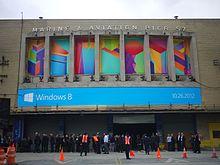
Windows 8 launch event at Pier 57in New York City
On August 1, 2012, Windows 8 (build 9200) was released to manufacturing with the build number 6.2.9200.16384 .[39] Microsoft planned to hold a launch event on October 25, 2012 and release Windows 8 for general availability on the next day. However, only a day after its release to manufacturing, a copy of the final version of Windows 8 Enterprise N (a version for European markets which lacks bundled media players to comply with an antitrust ruling) leaked online, followed by leaks of the final versions of Windows 8 Pro and Enterprise a few days later. On August 15, 2012, Windows 8 was made available to download for MSDN and TechNet subscribers. Windows 8 was made available to Software Assurance customers on August 16, 2012. Windows 8 was made available for students with a DreamSpark Premium subscription on August 22, 2012, earlier than advertised.
Relatively few changes were made from the Release Preview to the final version; these included updated versions of its pre-loaded apps, the renaming of Windows Explorer to File Explorer, the replacement of the Aero Glass theme from Windows Vista and 7 with a new flat and solid-colored theme, and the addition of new background options for the Start screen, lock screen, and desktop.[47] Prior to its general availability on October 26, 2012, updates were released for some of Windows 8's bundled apps, and a "General Availability Cumulative Update" (which included fixes to improve performance, compatibility, and battery life) was released on Tuesday, October 9, 2012. Microsoft indicated that due to improvements to its testing infrastructure, general improvements of this nature are to be released more frequently through Windows Update instead of being relegated to OEMs and service packs only.
Microsoft began an advertising campaign centered around Windows 8 and its Surface tablet in October 2012, starting with its first television advertisement premiering on October 14, 2012. Microsoft's advertising budget of US$1.5–1.8 billion was significantly larger than the US$200 million campaign used to promote Windows 95. As part of its campaign, Microsoft set up 34 pop-up stores inside malls to showcase the Surface product line, provided training for retail employees in partnership with Intel, and collaborated with the electronics store chain Best Buy to design expanded spaces to showcase devices. In an effort to make retail displays of Windows 8 devices more "personal", Microsoft also developed a character known in English-speaking markets as "Allison Brown", whose fictional profile (including personal photos, contacts, and emails) is also featured on demonstration units of Windows 8 devices. 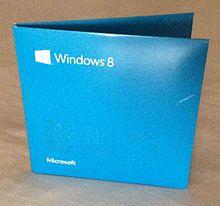

 Получите свидетельство
Получите свидетельство Вход
Вход



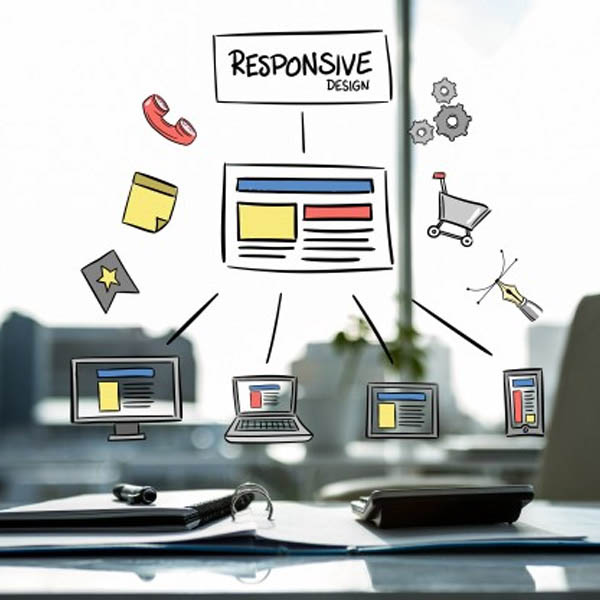


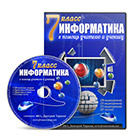
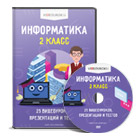
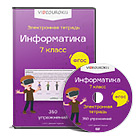


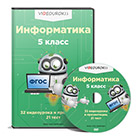
 Windows 8 is a personal computer operating system (56.11 KB)
Windows 8 is a personal computer operating system (56.11 KB)
 0
0 503
503 1
1 Нравится
0
Нравится
0


